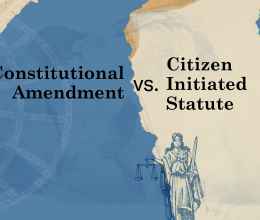Shortsighted policy decisions to cut spending often cost the state more than it saves. That’s one of the lessons history teaches us, particularly when it comes to prisons for profit. In September 2011, Ohio completed the sale of Lake Erie Correctional Institution in Conneaut to the Corrections Corporation of America, the nation’s largest for-profit prison company. It was the first and still is the only state-owned prison in the United States sold to a private business. In a letter to other state governors, CCA called the acquisition of the prison “groundbreaking.” However, three years later, the sale of LaECI offers a model of everything that’s wrong with prison privatization: an increase in violence; high rates of staff turnover; and security problems for the local community. In 2013, Ohio officials fined CCA nearly $500,000 for numerous violations. Déjà Vu All Over Again One would think the state should have learned its lesson in privatizing its prisons; however, we find ourselves amidst this debate once more. House Bill 239 authorizes the sale of North Central Correctional Institution in Marion. Once again, Ohio is pursuing a quick fix to save some resources rather than taking into account the short- and long-term consequences of prison privatization. Even though it already has three years of evidence from LaECI. Profit, Not Rehabilitation The purpose of our prisons is to rehabilitate and reform people before they rejoin society. It becomes difficult to accomplish this when a prison is sold to a for-profit company. The private prison industry promises savings and public revenue to taxpayers, but these are false promises. The bottom line of any private prison company is to make money for its shareholders. LaECI provides sufficient evidence that a private business has no obligation toward taxpayers, the community where a prison is located, and prisoners or their families:
- Upon taking over LaECI, CCA added close to 300 new beds to increase its profit margin.
- Staff members had safety concerns “due to low staffing number and not enough coverage.”
- The Conneaut Police Department received 229 LaECI-related calls in 2012, which is nearly four times more calls received than the previous five years combined.
- Drugs, alcohol, cell phones, and marijuana were being smuggled into the prison.
- Rehabilitation programs were cut.
- According to the Correctional Institution Inspection Committee, prisoner-on-staff assaults increased by 300 percent, and prisoner-on-prisoner assault increased nearly 190 percent between 2010 and 2012.
These are just a snippet of the many problems that arose from selling the one and only prison in the nation. This raises the question, why would Ohio want to lead the country in repeating this mistake with the sale of NCCI?
Read "Prisons for Profit: A Look at Prison Privatization" report and watch the Prisons For Profit documentary.
Ohio needs to implement sentencing reforms that will decrease our prison population rather than putting a bandage on its increasing corrections budget every fiscal year. According to Ohio Department of Rehabilitation and Correction data, state prisons are operating at 131 percent of capacity. Prison privatization will not help decrease this number. It’s in the best interest of private prison companies to keep people in prison, so they can make millions of dollars off of them. Ohio has undertaken modest sentencing reforms over the past few years, but it hasn’t decreased our prison population. State officials need to adopt robust sentencing reforms that will help us move toward building a better and more just criminal justice system. The state shouldn’t repeat the mistake it made by selling LaECI to CCA, it should learn from it. The evidence is clear. House Bill 239 is shortsighted legislation that will result in long-term costs for Ohio taxpayers. Hasher Nisar is a policy intern with the ACLU of Ohio.








